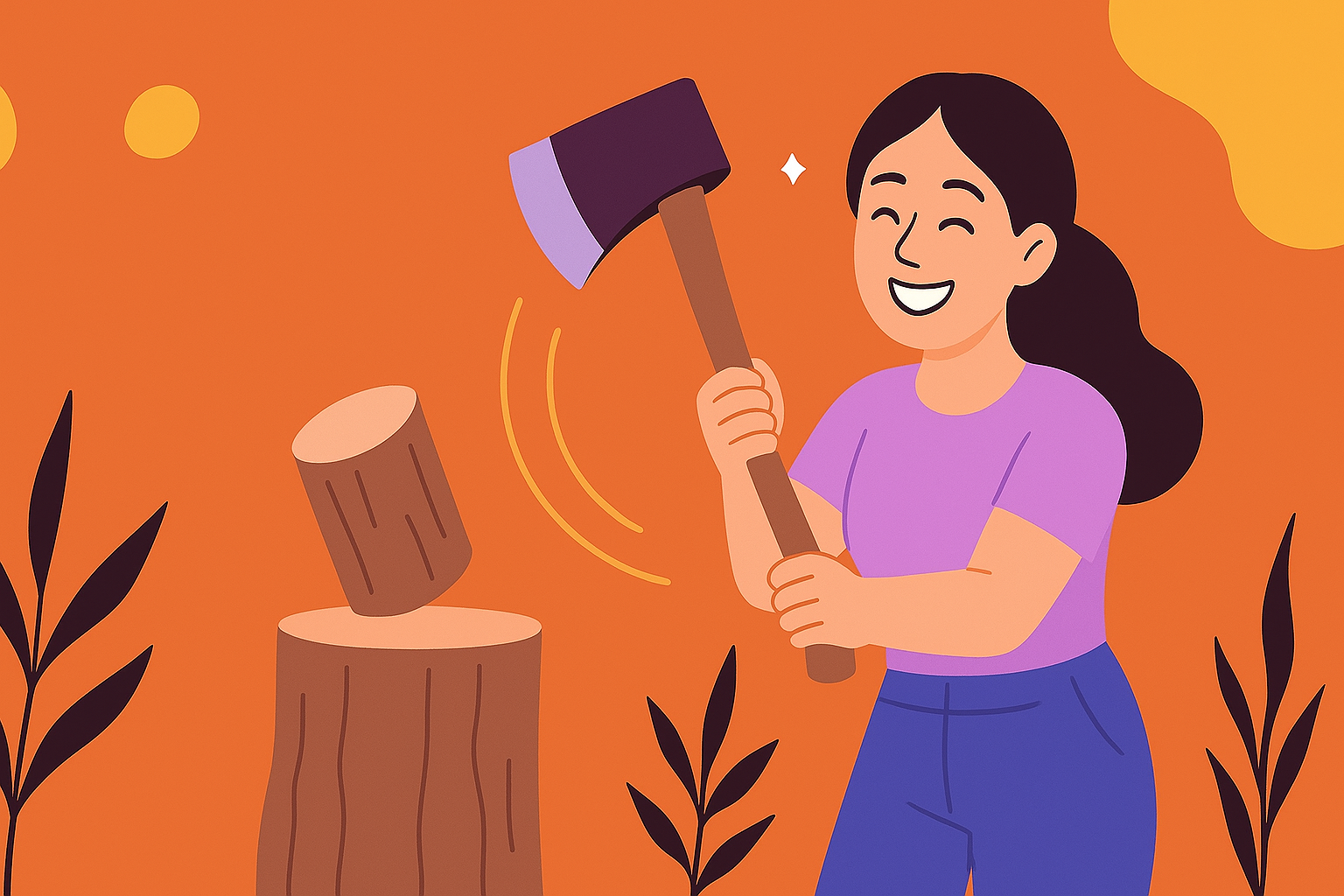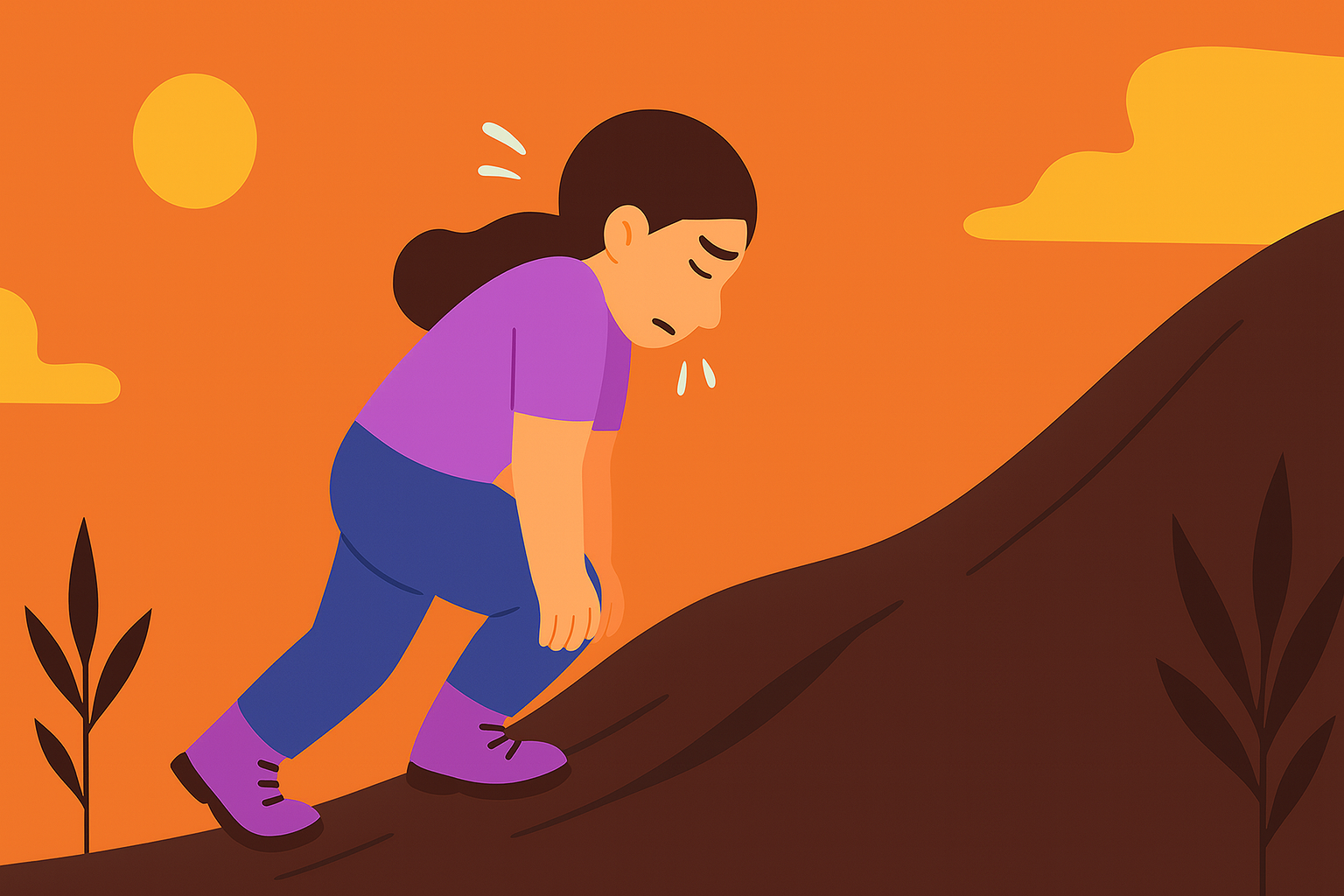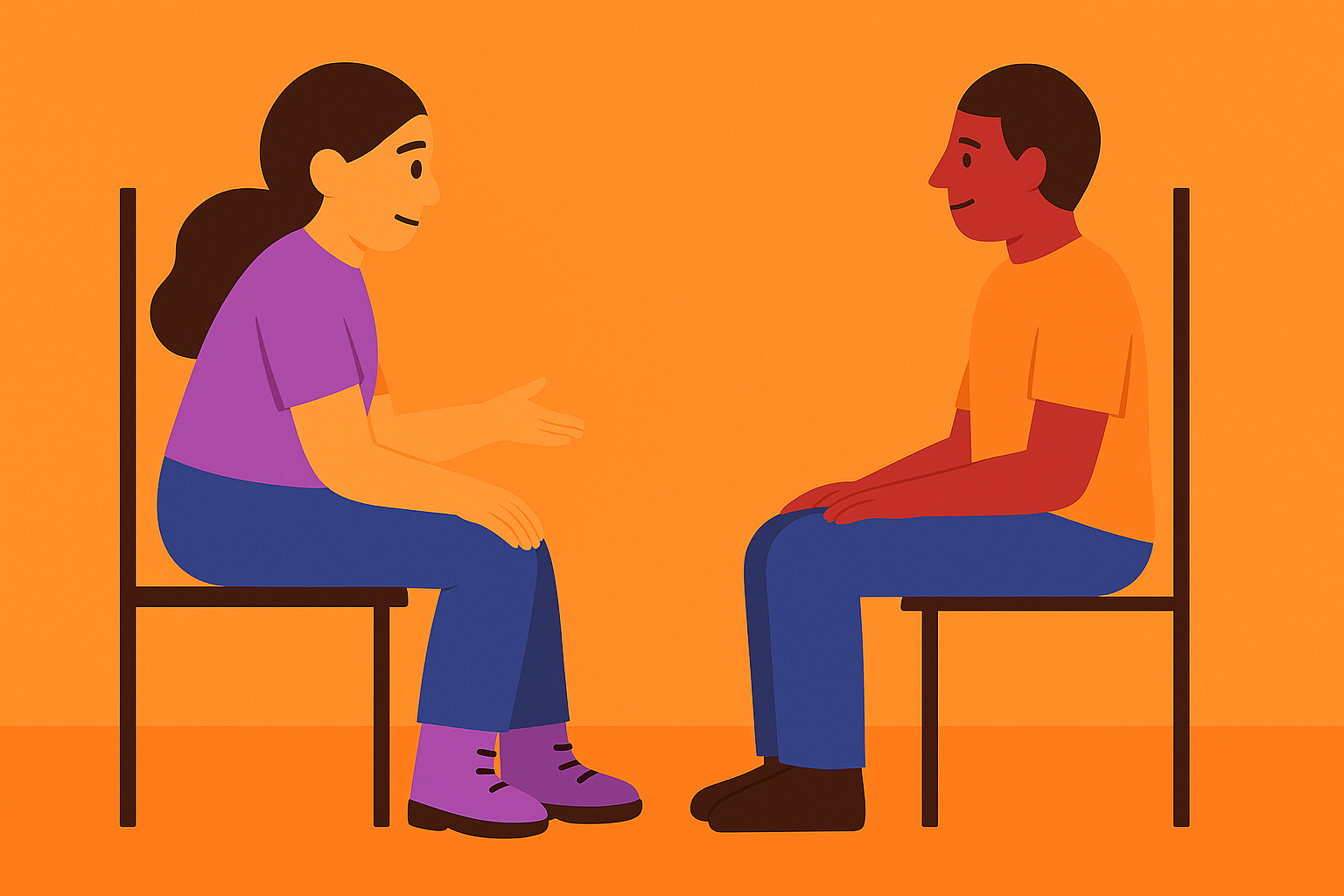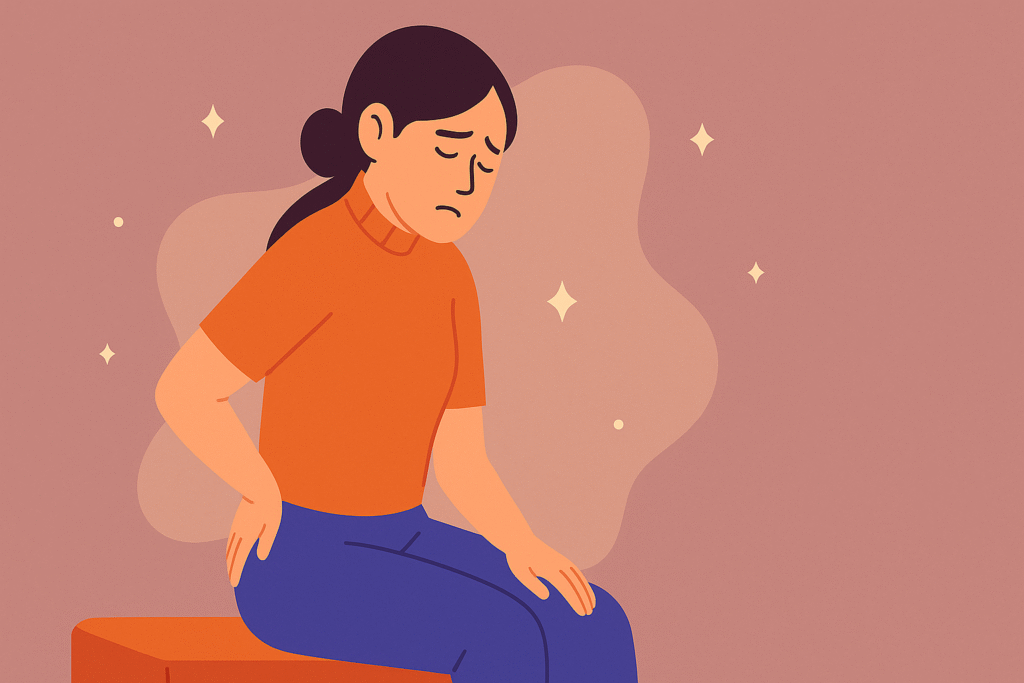Who am I?
I am Alina, I am 40 and I am in pain. Just like you. Like many of you living with chronic pain. Have you ever felt alone, invisible, ashamed or isolated because of your pain? Are you missing your healthy past self every day? Do you desperately need to be believed? If any of this resonates with you, let me share my story, which may be very similar to yours.
How it all started

May 2022 – more than three years ago – I was back in my mom’s village with my entire family, celebrating Easter. You see, in Romania we have this rule: before big celebrations, the entire house must be properly cleaned. If you’re Romanian, you know what I mean. If not, I’ll give you just a hint: we even paint the walls. God forbid you have a garden too. Anyway… we worked for an entire week: scrubbing, polishing, bleaching, wiping. Tired already? Well, so was my lower back. I just didn’t see the warning signs.
It was Easter Sunday. We went for a walk in the forest, had a nice picnic on the grass and returned as the sun was setting. Like most people, we love a good barbecue, so everyone had a task. For some reason, I left whatever I was doing and asked to be the one to cut some logs. My brother-in-law said no, but I’m good at persuading. I only got the chance to hit it once. On the second try, I got stuck.
The axe dropped and my eyes filled with tears as a sharp pain on the right side of my lower back took over.
I’ve always had a fragile back. After hard work, I’d typically follow up with physiotherapy and a bit of rest. But this… this was different. Still, I didn’t call the hospital. I innocently thought that with some analgesic cream and painkillers, it would go away.
It took three days before I could move properly again.
There are two types of people when it comes to pain: the ones who call an ambulance and the ones who don’t. You’ve already guessed which one I am.
How Many Diagnoses Does It Take Before Someone Actually Helps?
I returned to Spain, where I live, with a trace of pain. It wasn’t unbearable, but it was there – shrinking or growing depending on what I did, but also on how I felt. Stress, anxiety, even lack of sleep made it worse. I wouldn’t understand that part until much later.
In one year, I had two MRIs, two CT’s and multiple physical exams. With them came the ballet of doctors. I went from traumatologists to physiotherapists, then to neurosurgeons and back again, full circle a few good times. In between, there were other specialists like neurologists and osteopaths. Everyone agreed that I had a semi-hernia and some disc protrusions, but nothing “severe.” I was told that most adults have the same spinal features. Only as a newborn do you have a “peach-perfect” spine. So why did I expect to have a perfect one?
I didn’t. I never did.
I just wanted to understand why I was in this much pain constantly. Why it intensified. No doctor could explain why the pain spread like wildfire.
At first, it was only my lower back. But then, a few months in, it had taken over my entire back, neck and head, even down to my elbows and knees. My upper back ached like something – or someone – was trapped inside, trying to claw its way out, tearing through muscles. There was also burning under my skin, so I couldn’t stay in one position for more than 15 minutes. Therefore, I couldn’t sleep.
Ok, take some sleeping pills, change the mattress, change the pillows, they advised.
I did. I was like an empress in her baldachin bed, surrounded by 100 pillows of different sizes.

Doctors insisted there was no reason for the pain to be this bad, so the diagnoses kept shifting: lumbago (lower back pain), cervicalgia (neck pain), herniated disc… .
One of the doctors suggested I had fibromyalgia, but with no follow-up or further explanation. I kept wondering: why couldn’t they explain the pain? Maybe it was because they didn’t believe me?!
In the most dismissive tone, one doctor said:
“I don’t believe what you’re telling me. The tests show no evidence of the symptoms you describe. So, I believe it’s not real.” It crushed me. Yeah, doc, I wish you were bloody right. He would not be the first nor the last one to “hint” at that. Every time that happened, I cried myself to sleep for many days until I had to think what else I could do and who else I could go to. The frustration and the rage building inside were overwhelming. So the pain grew, but I kept going.
Eventually, I got two invasive procedures: an epidural steroid injection, and because that did not work, one month later, a radiofrequency ablation was performed.
If you’re reading this, you probably already know what that means or even had them done to you: one involves an injection into your spine; the other – a small portion of your nerves is burned. They were supposed to reduce the pain. In my case, that did not work.
Worse: after the first procedure, the pain in my lower back increased immensely and I could barely feel my right leg – I woke up the next day with an almost unresponsive leg.
It took more than two weeks, along with a mix of corticoids, painkillers and sleeping pills, to recover from it. During the second procedure, both sciatic nerves were affected. I lost about 25% of nerve activity in my legs, though I wouldn’t find that out until much later. The “sweet” sensations of this newly achieved pain felt like stepping on snakes that bit me: a mix of electric shocks and pulsating pain. They wouldn’t let me walk properly. I got really scared. I had never experienced anything like that before. What the hell was this?
One neurosurgeon said:
“In my 40 years of being a doctor, I have never heard of such a thing.”
The one who performed the intervention:
“I’ve run a physical exam on you, and the nerves in your legs seem to work just fine.” And because they were “so fine,” he prescribed synthetic morphine paired with ibuprofen. Ah….and I could take a gram of paracetamol in between if needed.
So welcome “happy pills”:
- Opioids (tramadol, synthetic morphine)
- Nerve pain medication (pregabalin)
- Corticosteroids, muscle relaxants, sleeping pills, antidepressants (leaving me with no energy or motivation) – all sprinkled with your everyday (hopefully not) painkillers.
Too many, too often, with no relief. It felt like the doctors were experimenting through trial and error with no proof the treatments were helping.
Why You Should Keep Going

I sipped from that cocktail of pills for almost three years. Most of the time, I felt my head foggy, but the pain never went away. Until February 2025, when I met someone who believed me and ran the correct tests.
This person was a traumatologist. Another one, you might say?! Yes, but the right one.
After reading the test results of the two MRIs (lumbar and cervical) and the electromyography he ordered, he identified two types of pain: nociceptive pain (the musculoskeletal pain) and neuropathic pain (injured or damaged nerves). Please note that I am not saying what he found, which was obvious in the results, but the consequence of it – which was the pain.
Finally, I had an answer for where the “snake bites” were coming from. Not from my head, that was clear.
And for the third type, “the invisible fast-spreading guest,” he recommended a physiotherapist.
Another one… I said and my eyes filled with tears.
He got up, held my hand and told me:
“Try one more time. Go and see this guy!“ I did. He was right.
And this really nice human being, after looking at my latest analysis, after two hours of questions and a physical exam, had a name for me: chronic pain due to central sensitization and a dysregulated nervous system. Someone was finally translating what my body had been screaming for so long.
Simply put, because of repeated physical and psychological trauma during my early life and not only, but especially due to the enormous amount of aggression suffered by the body and mind since the “cutting wood episode”, the nervous system made an extreme decision:
“I will send continuous sensations of pain, because clearly you are in danger and I need to make you aware so you can get out of there.”
The physio was advocating for my central nervous system, telling me that it was only trying to protect me.
Now, it just doesn’t know how to stop the alarm that went off.
I felt like crying, laughing, forgiving everyone – even forgetting them.
Finally, I could breathe.
And right then and there, my journey to leave chronic pain behind started.
Why I’m Writing This
I write this because so many of us feel alone, ashamed or even blamed.
We are left with pain and no answers. We second-guess our bodies. We grieve the person we used to be.
I haven’t healed, but I’ve found a path.
One that’s helping me move forward.
One I want to share.
Who I’m Writing This For
For people with chronic pain. Or any other kind of pain.
For people who, when invited somewhere, ask:
Are the chairs comfortable? Can I leave whenever I need to? Can I stand or even lie down? Are the people nice?
Yes–are they nice enough so I’ll feel safe there, not judged if I need to leave or take a break?
If you’re at the beginning of your story…
If you’ve tried everything…
If you’re tired of being told it’s in your head…
Even if you’ve already started your journey, but got stuck…
Here I am.
You’re not crazy.
You’re not alone.
What’s Next?

From here on, I’ll break down my story and share with you the many pieces of this journey: the good, the unbearable, the confusing, the unexpected relief.
I’m also very interested in the educational side of it, so I’ll explain what I’ve learned about chronic pain and other concepts that were unknown to me before.
I will talk about my experiences with medical teams, physiotherapists, psychotherapy and nutritionists. About the changes I had to make in every part of my life. The emotional rollercoaster: the battle, the fear, the sweet surrender, the irregular line that follows.
The horror of it all, but also the way forward I’ve started to find.
I’ll be sharing what actually helped me:
• Simple tools and routines for nervous system regulation
• Moments of clarity with doctors, therapists and supportive professionals
• My version of self-care for chronic pain due to central sensitization
• Non-medication pain relief strategies that brought real comfort
• The emotional breakthroughs that slowly helped me feel safe in my body again
Whether you’re searching for answers, holding on by a thread or starting over for the tenth time, I hope what I share helps you feel seen and a little more supported.
If you got this far,
Get Support in Your Inbox
Subscribe to the newsletter and let me help you turn confusion into clarity. The PDF I have prepared is a guide that will help you organise all the elements of your condition: symptoms, treatments and impact, so you can understand your pain behaviour. This is truly important when it comes to explaining it to healthcare professionals, loved ones and yourself.
“Clinical Clarity Workbook – A map for precise diagnosis“
Until next time,
Alina

